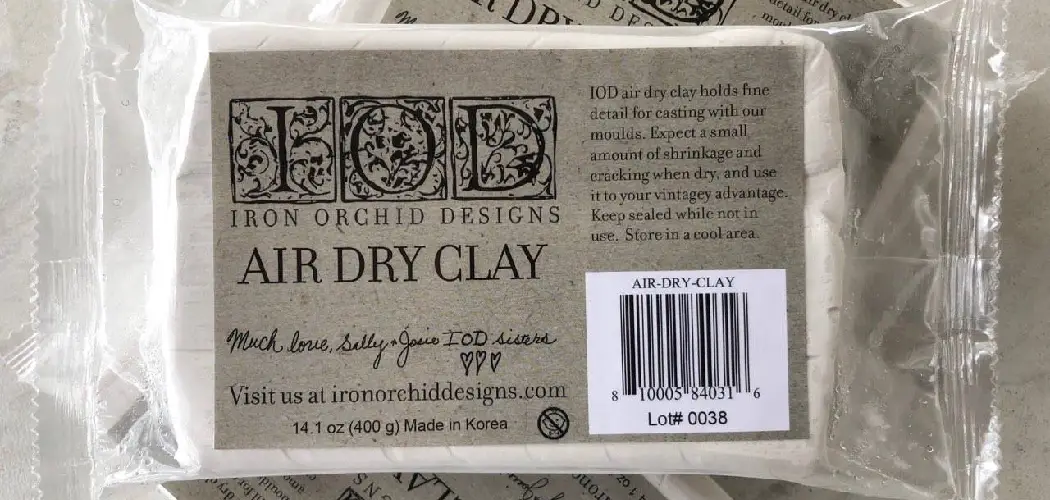Air dry clay is a versatile and popular crafting medium, cherished for its ease of use and ability to transform into a wide array of artistic creations. Whether you’re a seasoned artist or a novice crafter, knowing how to store air dry clay correctly is essential to ensure your clay remains pliable and ready for your next project. Improper storage can lead to dried-out, crumbly clay that’s challenging to work with.
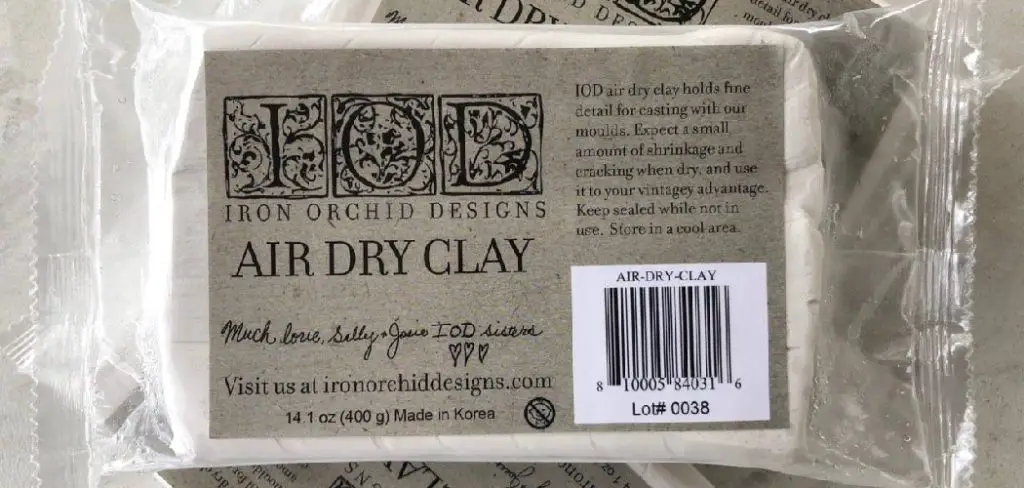
In this guide, we’ll explore the best practices for preserving your air dry clay, from keeping it airtight to maintaining the right moisture levels. We’ll also discuss the role of temperature and humidity in the storage process. By following these tips, you’ll extend the life of your air dry clay and be ready to embark on your artistic endeavors without any hindrance. So, let’s dive into the world of air dry clay storage and keep your creative spirit alive.
Importance of Proper Storage for Air-Dry Clay
Clay is a popular material for crafting due to its versatility, affordability, and ease of use. One type of clay that has gained popularity in recent years is air-dry clay. Unlike traditional clays that require firing in a kiln, air-dry clay can simply be left to dry at room temperature without the need for any special equipment. This makes it a convenient option for both amateur and professional crafters.
However, one important aspect that is often overlooked when working with air-dry clay is its proper storage. Many individuals tend to leave their leftover clay out in the open, which can lead to it drying out and becoming unusable. In this section, we will discuss why proper storage of air-dry clay is crucial for preserving its quality and longevity.
Preventing Drying and Cracking
Air-dry clay is made up of water, natural fibers, and a binding agent. When the clay is left exposed to air for too long, the water begins to evaporate, causing the clay to dry out and become brittle. This can lead to cracks forming in the clay when it is molded or shaped, resulting in a less than desirable finished product. Proper storage helps prevent this drying process by keeping the clay moist and pliable.
10 Methods How to Store Air Dry Clay
1. Store in an Airtight Container
One of the best ways to store air dry clay is in an airtight container. This will help to keep the clay from drying out and cracking. It is important to make sure that the container is sealed tightly, as any air that gets in can cause the clay to dry out quickly. Additionally, it is a good idea to wrap the clay in wax paper before placing it in the container, as this will help to keep it from sticking together.
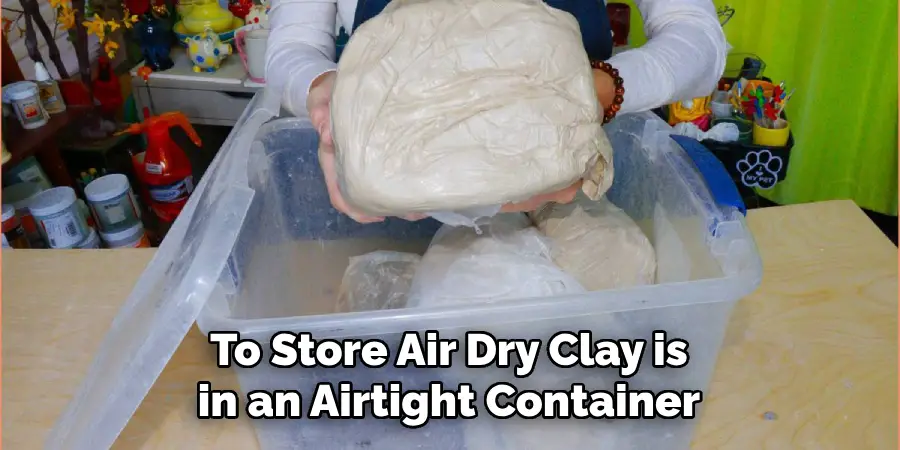
2. Keep Away From Direct Sunlight
It is important to keep air-dry clay away from direct sunlight, as this can cause it to dry out too quickly. If possible, store the clay in a dark place, such as a cabinet or drawer. If you need to leave your clay out on a table or countertop, make sure that it is not directly exposed to sunlight or heat sources.
3. Freeze Clay for Long-Term Storage
If you are not planning on using your air dry clay for an extended period of time, you may want to consider freezing it. Freezing your clay will help to preserve its texture and color for up to several months.
To freeze your clay, simply wrap it tightly in plastic wrap and place it into a freezer-safe bag or container before placing it into the freezer. When you are ready to use your frozen clay again, simply thaw it at room temperature overnight before unwrapping and using it as normal.
4. Use Silica Gel Desiccant Packets
Silica gel desiccant packets are small packets filled with silica gel beads that absorb moisture from their surroundings and can be used to help prevent air dry clay from drying out too quickly when stored for long periods of time. Simply place a few packets near your stored air clay and replace them every few weeks or whenever they become saturated with moisture.
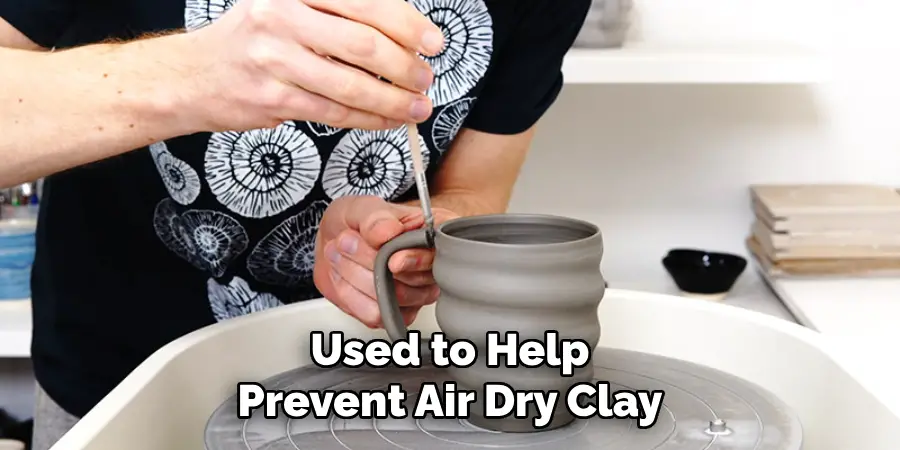
5. Make Sure Clay Is Thoroughly Dry Before Storing
It is important that your air-dry clay be completely dry before storing it away for long periods of time, as any remaining moisture could cause mold or mildew growth over time if left unchecked.
To ensure that all of the moisture has been removed from your piece of artwork before storing it away, allow your piece ample time (typically 24-48 hours) for drying at room temperature before wrapping and packing it away in an airtight container or bagging up for freezing if necessary.
6. Rehydrate Dried Out Clay
If you come across some dried-out pieces of air dry clay while unpacking them after storage, there’s no need to worry! Most types of air clays can easily be rehydrated by adding small amounts of water until they reach their original consistency again – just be sure not to add too much water at once as this could cause the pieces of rehydrated clay to become too soft and difficult to work with again until they have had sufficient time for drying out once more!
7. Avoid Storing Clay Near Heat Sources
It’s also important not to store your stored pieces of air-dry clays near any sources of heat, such as radiators or fireplaces, as these can cause them to become overly brittle over time due to their intense heat, which may result in cracking upon handling after storage – so always make sure any pieces being stored are kept well away from any sources of heat!

8. Store In Cool Place
Storing your pieces of art made with air-dry clays should always take place in cool places such as cabinets or drawers rather than leaving them on display where they may be exposed longer than necessary resulting in them becoming overly dried out due to prolonged exposure which may result in cracking upon handling after storage – so always make sure any pieces being stored are kept well away from any sources of direct sunlight!
9. Wrap In Wax Paper
Wrapping each piece individually with wax paper prior to placing them into containers/bags helps reduce sticking between different pieces when stored away – this also helps protect delicate details during transport if needed without having to worry about smudging/smearing due to adhesion between different surfaces!
10. Label Containers/Bags
When packing multiple pieces into containers/bags for storage purposes always remember to label each one clearly with date & type info so easier to locate specific items later without having to search through the entire collection!
Common Mistakes to Avoid When Storing Air Dry Clay
Storing air dry clay seems like a simple task, but there are actually some common mistakes that can lead to your clay drying out too quickly or becoming too hard to work with. To ensure that your air dry clay stays in good condition for all your future projects, make sure to avoid these mistakes:
- Not sealing the packaging properly: Air dry clay usually comes in a sealed package to prevent it from drying out before use. However, if you don’t seal the packaging properly after opening, the clay can quickly dry out and become unusable. To avoid this, make sure to tightly seal the package or transfer the clay to an airtight container.
- Leaving the clay exposed to air for too long: Air dry clay can start drying out just from exposure to air, so it’s important to work quickly when using it and not leave it sitting out for extended periods of time. If you need to take a break while working with the clay, cover it with a damp cloth or plastic wrap to prevent it from drying out.
- Not storing the clay in a cool, dry place: Heat and humidity can cause air dry clay to dry out faster than intended, which can make it difficult to work with. It’s best to store your clay in a cool, dry place such as a pantry or cabinet. Avoid storing it near sources of heat or moisture, such as windows or kitchen appliances.
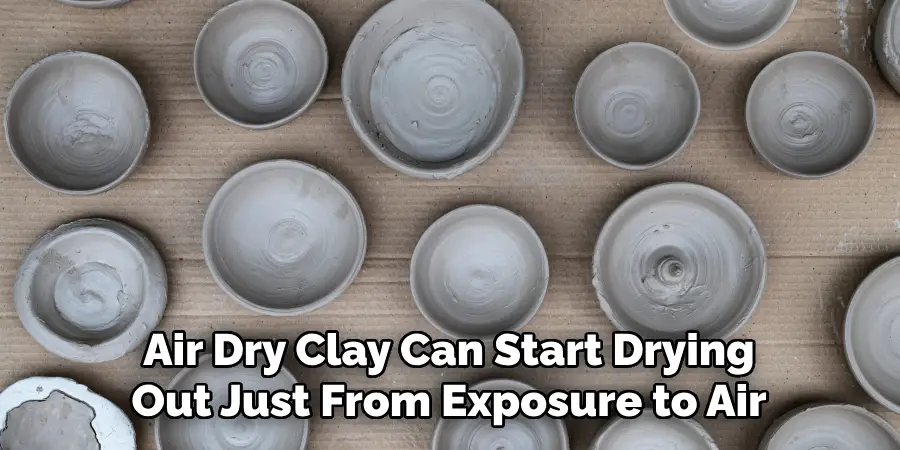
Conclusion
All in all, air dry clay is a great medium to work with, but it’s important to take extra measures when it comes to storage. Giving the clay good ventilation and covering it carefully will ensure that it maintains its shape and texture until you need to use it again.
If you don’t feel confident in your storage skills, there are plenty of tutorials and classes available to teach more about how to store air dry clay. Through understanding the basics of storage techniques, you’ll be able to get the best out of your air dry clay for years to come! So why not give it a go and see what kind of creative artworks you can use this medium for?

